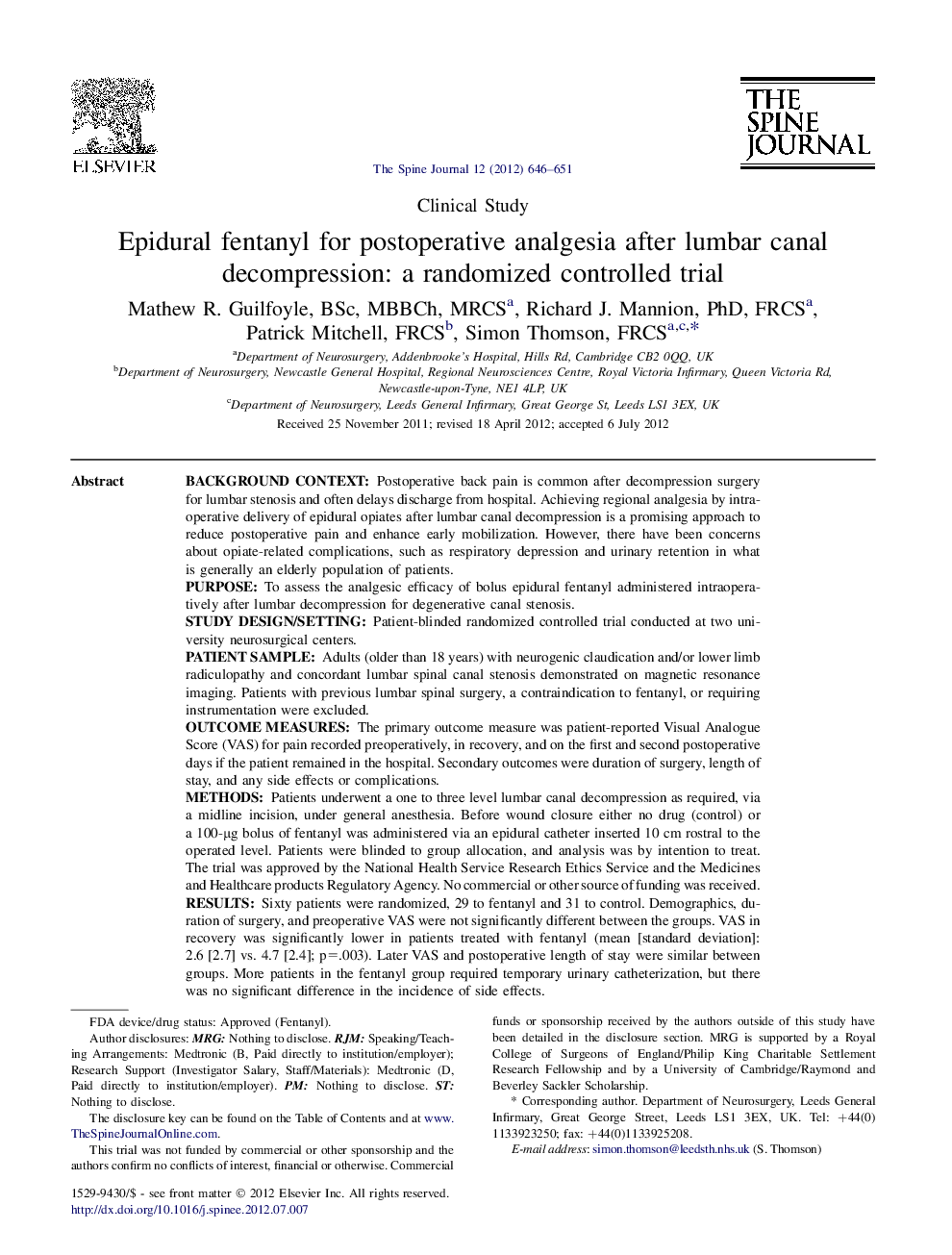| کد مقاله | کد نشریه | سال انتشار | مقاله انگلیسی | نسخه تمام متن |
|---|---|---|---|---|
| 4097583 | 1268593 | 2012 | 6 صفحه PDF | دانلود رایگان |

Background contextPostoperative back pain is common after decompression surgery for lumbar stenosis and often delays discharge from hospital. Achieving regional analgesia by intraoperative delivery of epidural opiates after lumbar canal decompression is a promising approach to reduce postoperative pain and enhance early mobilization. However, there have been concerns about opiate-related complications, such as respiratory depression and urinary retention in what is generally an elderly population of patients.PurposeTo assess the analgesic efficacy of bolus epidural fentanyl administered intraoperatively after lumbar decompression for degenerative canal stenosis.Study design/settingPatient-blinded randomized controlled trial conducted at two university neurosurgical centers.Patient sampleAdults (older than 18 years) with neurogenic claudication and/or lower limb radiculopathy and concordant lumbar spinal canal stenosis demonstrated on magnetic resonance imaging. Patients with previous lumbar spinal surgery, a contraindication to fentanyl, or requiring instrumentation were excluded.Outcome measuresThe primary outcome measure was patient-reported Visual Analogue Score (VAS) for pain recorded preoperatively, in recovery, and on the first and second postoperative days if the patient remained in the hospital. Secondary outcomes were duration of surgery, length of stay, and any side effects or complications.MethodsPatients underwent a one to three level lumbar canal decompression as required, via a midline incision, under general anesthesia. Before wound closure either no drug (control) or a 100-μg bolus of fentanyl was administered via an epidural catheter inserted 10 cm rostral to the operated level. Patients were blinded to group allocation, and analysis was by intention to treat. The trial was approved by the National Health Service Research Ethics Service and the Medicines and Healthcare products Regulatory Agency. No commercial or other source of funding was received.ResultsSixty patients were randomized, 29 to fentanyl and 31 to control. Demographics, duration of surgery, and preoperative VAS were not significantly different between the groups. VAS in recovery was significantly lower in patients treated with fentanyl (mean [standard deviation]: 2.6 [2.7] vs. 4.7 [2.4]; p=.003). Later VAS and postoperative length of stay were similar between groups. More patients in the fentanyl group required temporary urinary catheterization, but there was no significant difference in the incidence of side effects.ConclusionsBolus epidural fentanyl provides effective short-term postoperative analgesia after lumbar canal decompression and may be a useful adjunct to pain management in patients undergoing lumbar spine surgery.
Journal: The Spine Journal - Volume 12, Issue 8, August 2012, Pages 646–651